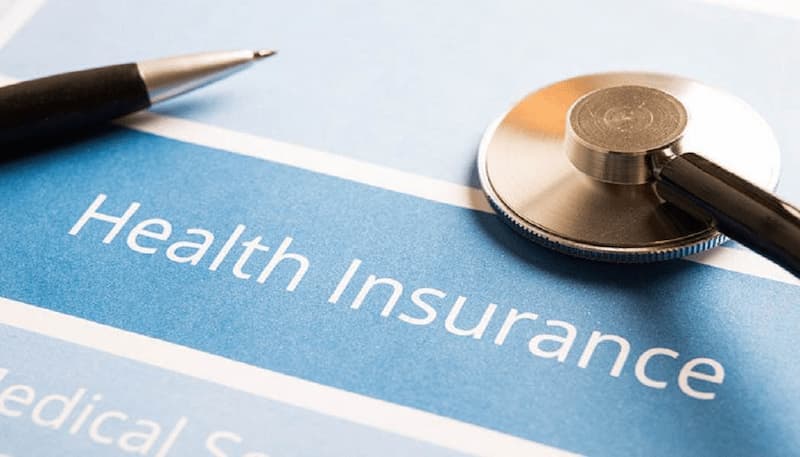What Is Gap Health Insurance? Key Points
What is Gap health insurance, first and foremost?
A high-deductible major medical plan and a group supplemental health plan are both used in conjunction with Gap Health Insurance. A High Deductible Health Plan (HDHP), according to the IRS, is one that has a family deductible of $2,600 and an individual deductible of at least $1,300. People sometimes refer to gap insurance as “insurance on insurance” because, as the name suggests, it assists in covering medical expenses that arise before the deductible is met.
For more information, keep reading.
Table of Contents
Health Insurance Gap: What Is It?
A high-deductible health plan (HDHP) is typically purchased with gap health insurance as supplemental coverage.
For the year 2022, the IRS defines an HDHP as a plan with an annual out-of-pocket maximum of $7,000 for an individual and $14,000 for a family, and a minimum deductible of $1,400 for an individual and $2,800 for a family.
Only after paying this significant yearly premium do HDHPs provide coverage.
You can get coverage for medical costs under gap health insurance policies before your deductible is reached.
By paying a small monthly premium for gap health insurance coverage, certain people with high deductibles may see their medical costs drop dramatically.
Does Gap Insurance Comply With The ACA?
No, gap health insurance does not meet the requirements of the Affordable Care Act (ACA), as it is not meant to serve as major medical insurance. Instead, it is used in conjunction with a major medical plan that complies with the ACA. “Major health insurance plans are typically understood to be those that offer robust and comprehensive coverage, as opposed to gap plans, which typically do not.
Why Is Gap Health Insurance Necessary?
In 2017, 21.3% of American adults lacked adequate insurance, according to the Commonwealth Fund. In addition, they discovered that in 2020, 9.5% of people had a coverage gap. It is becoming clear that gap insurance is more popular as more data is gathered in the wake of one of the biggest public health crises in the last ten years.
if the beneficiary has a lot of medical issues that result in high copays, deductibles, or coinsurance. This is especially helpful if the kinds of medical services you need are not covered by your primary health insurance plan. Access to healthcare drastically decreases when insurance is expensive. In fact, 73.7% of adults without insurance said that they lacked coverage because the cost was too high, according to the Kaiser Family Foundation.”
Even for those with respectable jobs that provide health insurance coverage, the deductible is frequently higher than what they can afford to pay for treatments, necessitating assistance in meeting that prohibitive deductible. In addition, insurance premiums are rising as well. According to CNBC, deductibles have gone up by 68.4% since 2011, going from an average of $991 to $1,669 instead.”
What Is Covered By Gap Health Insurance?
A medical gap insurance plan is straightforward because it adheres to an employer’s major medical plan. It directly reimburses the subscriber or provider for the Explanation of Benefits (EOB) from the underlying major medical plan. In accordance with a maximum benefit amount, a gap plan pays the benefits listed in the Schedule of Benefits. Prior to receiving plan reimbursement, subscribers to these plans may be required to meet an additional deductible or coinsurance (out of pocket).
The sum applied to the insured’s major medical deductible and coinsurance is covered by a medical gap plan. With the exception of professional fees in a doctor’s office or clinic, outpatient prescription drugs, vision, dental, and plan copayments, it covers the same costs as the major medical plan.

How To Interact With People Who Only Have Temporary Health Insurance?
You should be prepared to work with people who have coverage gaps or need supplemental insurance as the third-party facilitator. The Affordable Care Act (ACA) plan and temporary minimum essential coverage are very different from one another. For those who have an HDHP, the ACA is more comprehensive but not always available. The fact that short-term health plans can be purchased for just under a year (364 days) outside of the Open Enrollment Period should also be noted.
When switching health insurance plans or dealing with extremely high deductibles, communication is essential. These people frequently experience feelings of overwhelm and uncertainty regarding what to do. You can help those who require stress relief the most by having a thorough understanding of the various systems. To find out more, get in touch with a Lewis & Ellis consultant right away. See more about What Is A TPP?
Gap Insurance Health Price
Your lifestyle and a few personal characteristics, like those of traditional health insurance plans, will influence the price of your gap insurance.
Chosen Plan Benefits
What medical services specifically do you want covered first? Plans with limited benefits are more affordable, while those with comprehensive coverage are more expensive.
How much coverage do you want, then? Higher monthly premiums are a direct result of higher payouts for expensive medical services, and vice versa.
Age
In general, older people need more medical services than do younger people. In light of this, the price of gap insurance typically increases as you age.
Health Status
According to the ACA, health insurance providers cannot reject customers based solely on their medical history. Gap insurance plans, however, are exempt from the ACA’s requirements. In light of this, you should budget more for gap health insurance if you already have medical issues.
Location
Higher medical costs are a direct result of expensive places to live. This will be taken into account when insurance companies give you a quote for a gap insurance policy. Your gap health insurance policy will typically be more expensive if you reside in a wealthy community with a high cost of living than it would be for someone who does not. See more about Is Welding Bad For Your Health?
Time To Consider A Medical Gap Insurance Plan
Gap insurance policies are additional insurance policies. You might be wondering why you even need gap insurance if you already have health insurance.
The answer is straightforward: gap insurance may, in some circumstances, enable you to significantly reduce your out-of-pocket medical expenses. Additionally, having some degree of peace of mind about extremely high medical costs contributes significantly to your daily well-being.
Low HSA Balance
Gap insurance policies are frequently bought along with HDHPs. HDHPs are occasionally paired with health savings accounts (HSAs), special types of savings accounts that can be financed with pre-tax money but are only to be used for medical costs.
Long-term employees can build up sizable balances in their HSAs thanks to the frequency with which employer contributions roll over from month to month. Enrolling in a gap insurance plan may not be the best course of action for these long-term employees because they have adequate funds to cover unanticipated high-cost medical procedures. Given the ready availability of funds, the increased monthly premium may not be necessary.
Enrolling in a gap insurance plan might be the best option for people who are enrolled in HDHPs but do not have HSAs or do not have significant balances in their HSAs.
High Probability Of Needing High-expense Medical Services
Buying a gap insurance policy may enable you to receive crucial coverage in the event that something does happen, especially if hereditary or lifestyle factors indicate that you may require pricey medical services at some point in the near future.
You might end up paying a significant monthly premium for coverage because insurance providers can exclude people with pre-existing conditions from gap health insurance plans, but in the event that something serious occurs, the lump sum payment you receive can be very helpful in covering medical costs and avoiding a significant disruption to your way of life.
Saving On More Common Medical Expenses
Instead of providing protection from worst-case scenarios, some gap health insurance policies seek to ease the burden of more frequent and common medical needs. To keep your monthly premium low for these kinds of gap plans, try to limit your coverage to the services you anticipate ultimately needing. An effective gap health insurance plan reduces medical costs without raising your monthly premium to the point where the difference between the two outweighs the reduction.
The End
Your out-of-pocket medical costs are decreased by supplemental health insurance and gap insurance. These plans pay for services that major medical insurance plans don’t cover or don’t fully cover. For instance, if your health insurance provider covers 70% of all services, you would be responsible for the remaining 30%. The remaining balance may be covered in whole or in part by gap or supplemental health insurance.
Best wishes.

